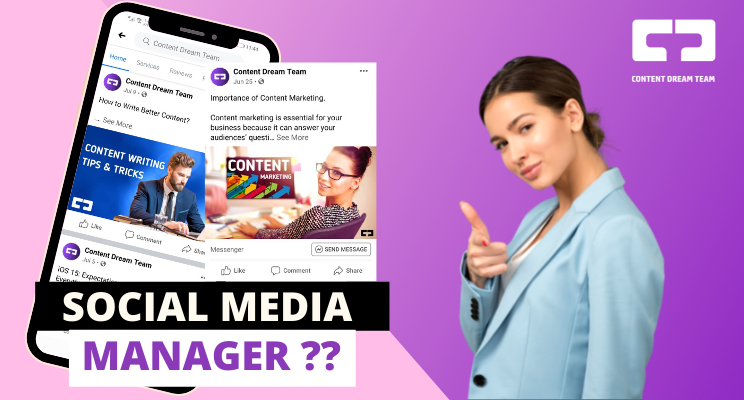
Native advertising can be a great option if you have ever heard of content marketing and ads made to look like articles. These two strategies have key differences and similarities. Native advertising targets a particular audience while content marketing aims to reach a wider audience. It is crucial to ensure that native advertising publications have relevant audiences. The publishers that you choose must promote their services, organize their writing staff, and provide you with reliable content performance reports so that you can understand the ROI.
Costs of content advertising vs. native ads
While both advertising techniques have their strengths, one is better than the other. Native advertising is much more costly and more cost-effective than content marketing. However, native advertising is often more effective and produces better results. Many of the same strategies can be applied to both types of marketing, despite the differences. Native advertising can also be used as a content marketing strategy. Cognitive ease is an example of a content marketer strategy that can be used for native ads.
One advantage of native advertising over content marketing is the guaranteed placement on high-authority websites. Native advertising can target specific publications. This gives a company an immediate boost in brand awareness. While native advertising agencies are expensive, they only charge a monthly retainer. Native advertising agencies can guarantee success for a longer time period.
Putting customer needs first in content marketing vs native advertising

The two major types of online marketing include content marketing and native advertising. Native advertising uses content to reach these customers. Content marketing places the customer first. Native advertising matches advertisements with websites. Content marketing can help build long-term relationships and encourage loyal customers. Happy customers generate repeat sales. Native advertising is also a great way to promote customer loyalty. Here are the key differences between the two types of marketing.
Content marketing costs less than native advertising. Content marketing is easy to do. It requires a website that can be used for free. Native advertising is affordable because companies pay only for the ads on a platform. The companies then create content that fits in with the advertising environment. The platform will review the content and add warnings if needed. Native advertising can be less effective that content marketing, but it doesn’t have to be.
Advertisementorials are paid ads made to look like an actual article.
Advertisements are not just a sales pitch. They have many benefits. These pieces can help to build your brand as well as increase conversions and lead-generation. You can find publications that publish related content within your industry if you have an idea for an essay. TechCrunch is a publication that may be interested in your article if, for example, you own a technology company.
Advertorials can help you build brand recognition as they blend in with the other content on a page. They don't immediately identify themselves as an advertisement, which makes them more likely that they will be read and opened. In addition, when they're published in trusted publications, users won't mind seeing them. Advertorials will be more effective if they are able to find relevant content.
Comparison of native advertising and content marketing ROI

If you're looking to increase your organic rankings and reach a wide audience, content marketing is your best bet. Instead of native advertising that limits its reach to paid publishers partnerships, content marketing delivers tangible results through an expanding link portfolio. And unlike sponsored hyperlinks, which are not worth anything, you can track your ROI via increased organic rankings, consumer engagement, and other metrics. And because it costs thousands of dollars, content marketing can help you keep your advertising budget under control.
The ROI of content marketing is measured by the number of leads generated, number of high-quality links and total social shares. According to a recent study by Fractl and Moz, a content marketing campaign generates up to 27 links for every article published, which is about four hundred and twenty-five percent higher than the same content produced through native advertising. It's also a great way to increase traffic or increase revenue, since it can create high-quality links as well as improve search engine ranking.
FAQ
What is the best content marketing platform?
There are many platforms today. Each one has its pros and cons. These are some of the most popular choices:
-
WordPress is easy to set up, manage and maintain. Fantastic community.
-
Wix is easier than WordPress to set-up and maintain. It doesn't require any technical knowledge.
-
Squarespace - Best option for those who already have a website.
-
Blogger – Free blogging service
-
Medium - A place where writers can share their work.
-
Instagram - A platform that uses images
-
LinkedIn - A networking platform.
-
Facebook – A social network.
-
YouTube - Video sharing platform.
-
Pinterest - Image-based platform.
-
Google Analytics - Track visitor behavior.
-
Hubspot - Email marketing software.
-
MailChimp, Email marketing software.
How does Content Marketing Strategy help me?
Content Marketing Strategy allows you to access data that you might not otherwise have. This data allows to identify which types and content perform well.
It can help you decide which strategies are best to drive traffic to you site. It provides insight into your audience's behavior, which can help you create better content.
This allows you to spend less time worrying about which content is good and more on what works.
A Content Marketing Strategy also helps you analyze what messages resonate most with your audience.
You can find out their preferred content by analysing these messages. You can then create similar content and continue to develop your successful ideas.
Finally, a Content Marketing Strategy will help you track how your content performs. You can see which content types convert well by sharing more.
A Content Marketing Strategy, in other words, is key to ensuring that your content performs as expected.
How does content marketing differ from traditional advertising?
Traditional advertising is focused on attracting attention. Content marketing is about providing value. Because most people don't pay attention to traditional advertising, it is often a waste. Instead, content marketing is more effective and will lead to higher engagement rates.
How much content marketing should I invest?
That depends on how many leads you want to generate. Depending on industry, the average lead cost is between $5-$10. As an example, 20 dollars per lead was the cost of our first business. Today, we spend an average of $6-7 per lead.
Statistics
- Out of the 1,500 marketers we surveyed for our State of Content Marketing report, 78% who felt their content marketing strategy was exceptionally effective in 2021 had documented their strategy. (semrush.com)
- To further show the importance of this, 89% of people have stopped doing business with a company because of a poor experience. (neilpatel.com)
- Companies that use content marketing see approximately 30% higher growth rates than businesses not using it. (mailchimp.com)
- Seventy-two percent business to business (B2B) (mailchimp.com)
- Forty-seven percent of buyers view 3 to 5 pieces of content before engaging with a sales representative. (mailchimp.com)
- Measure your goals with a progress indicator of 0-100%. Make your goals collaborative and transparent (semrush.com)
- In fact, would pay more for a better customer experience, and 86% of B2B buyers would pay more. (neilpatel.com)
- According to our research, 65% of companies with very successful content marketing in 2021 ran content audits at least twice a year. (semrush.com)
External Links
How To
How can you build a content strategy?
It is important to first understand the content that you wish to create for your clients. Once you have a clear understanding of your clients' needs, you can start creating content. This might mean that you need to create an editorial calendar, and plan where the content will be coming from. Content should always serve a purpose. It doesn't matter if it's blog posts, social media updates, e-books, or anything else, but they should all serve a single goal.
After you have decided what type of content you want, it is important to identify your target market. What are their interests and what do they care about?
After identifying your target market, next comes finding ways to communicate with them. Although social media platforms can be a great way of connecting with people, there are many other options, including videos, podcasts, webinars and webinars.
After you have determined how you will communicate with the market, the next step to take is to determine what topics and types content you want. This goes back to the purpose of writing the content. What problem is it solving? Are they satisfied? Is it going to make their lives easier?
Now that we know what type of content we write, it is time to determine what you want. Do you want to share information about your industry? On current events? What about specific products or services? This question will determine your focus.
Once you have answered all of these questions, it is time to put everything together into one package.
You want every piece you create to serve its purpose. It is important to not waste time or energy. Therefore, you should ensure that every piece of content you create has quality.
Remember that great content marketing strategies have many moving parts.